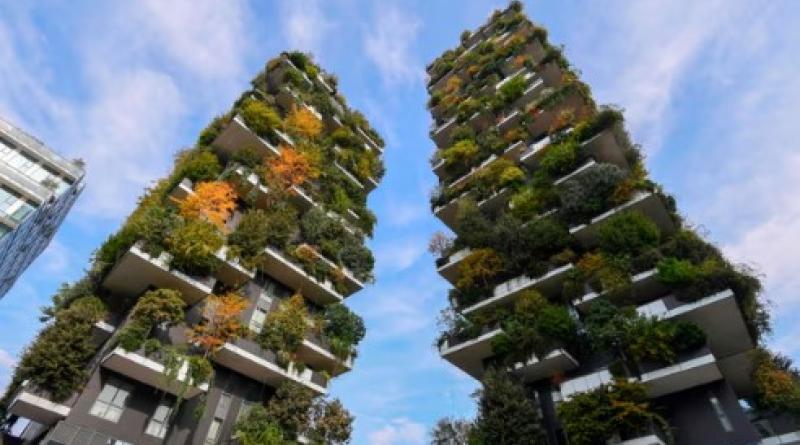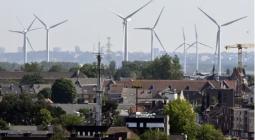EU agrees deal to cut emissions from homes and buildings

New buildings must be zero-emission and have solar panels by 2030, and fossil fuel boilers to be banned by 2040
New buildings in the EU must have no emissions from fossil fuels by 2030, and boilers that use those sources will be banned by 2040 under a new deal on energy and homes.
The rules, agreed between MEPs and member states but not yet formally adopted, set targets to make buildings waste less energy. Subsidies for standalone oil and gas boilers will stop by 2025.
“Energy wasted is money wasted on bills,” said Ciaran Cuffe, an Irish MEP with the Green grouping who was in charge of the proposal. “We must help citizens to save money, and protect them from volatile energy prices.”
More than a third of the EU’s planet-heating pollution comes from its buildings, many of which are old, leaky and heated by burning fossil fuels. The agreement seeks to phase out oil and gas boilers by 2040, though under the new rules it will continue to subsidise hybrid systems.
Thomas Nowak, the head of the European Heat Pump Association, said: “Setting a date for ending fossil fuel heating in Europe’s buildings provides crucial clarity for consumers, and charts the path for the heating sector. It makes any investment in heat pump solutions a future-proof choice.”
Heat pumps, which warm buildings cleanly and efficiently but are expensive, are the main tool to decarbonise buildings in a roadmap drawn up by the International Energy Agency for reaching net zero emissions by 2050. The European Commission will publish a heat pump action plan in early 2024 to build and install more of them.
If approved in its current form, the deal struck on Thursday night will also force member states to put solar panels on more buildings, starting with new public buildings and offices and expanding to include new homes by 2030.
Jan Osenberg, a policy adviser at SolarPower Europe, said the rules would help integrate solar panel installations into construction processes and reduce costs. He said: “This is smart and a significant step into a future where having rooftop solar is as self-evident as having a washing machine.”
The agreement lets member states make exceptions for agricultural and heritage buildings, as well as churches and other places of worship.
Striking examples of green-tinged architecture have sprung up across Europe in recent decades, from the tree-filled Bosco Verticale in Milan to the plywood skyscraper in Sweden’s Skellefteå. The big challenge for policymakers is cleaning up the millions of old buildings that leak heat and cost a lot to renovate.
Under the agreement, member states will have to cut the average primary energy used in homes by at least 16% by 2030, and by at least 20% by 2035. It is a compromise on the European Commission’s original proposals to renovate the leakiest homes, which member states had fought fiercely.
Eva Brardinelli, a buildings expert at the European branch of the Climate Action Network, said a “menacing campaign” by the fossil fuel industry and rightwing populists had watered down the proposal. “The final agreement on the directive missed a significant opportunity to lift millions out of energy poverty and cut our dependence on fossil fuels.”
Photograph: Miguel Medina/AFP/Getty Images





